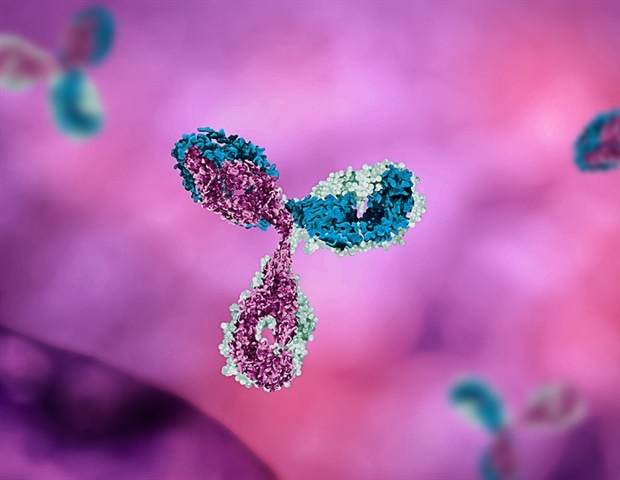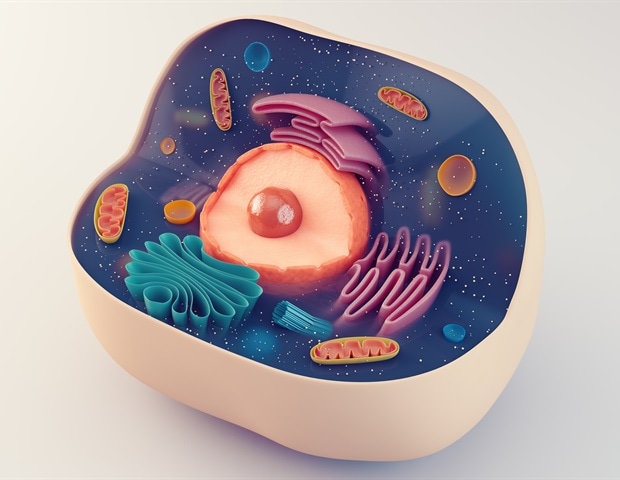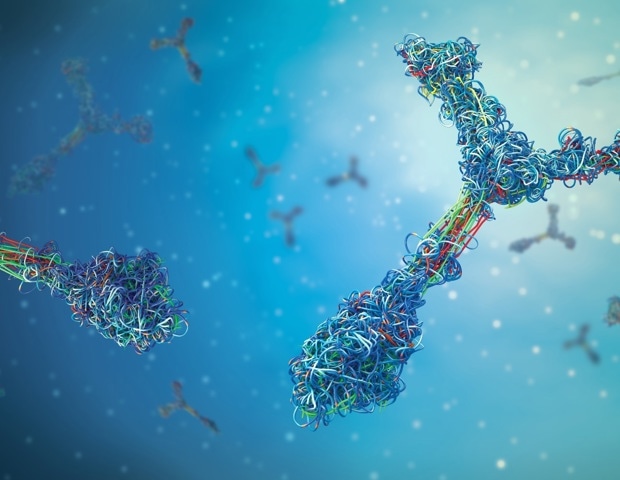An engineered protein turns off the kind of immune cells most likely to damage tissue as part of Type-1 diabetes, hepatitis, multiple sclerosis, shows...
Vous n'êtes pas connecté
العناوين :
 - EURASIAREVIEW.COM - A la une - 14/09/2024 22:48
- EURASIAREVIEW.COM - A la une - 14/09/2024 22:48
We’re Closer Than Ever To Solving Mystery Of Deadly Virus
Around 58 million people suffer from chronic inflammation caused by the hepatitis C virus, and 300,000 people die from the disease every year. So far, no treatment has successfully managed to reduce the prevalence of hepatitis C in the world, and this has prompted scientists to start looking for a vaccine. However, limited knowledge of the protein complex that enables the virus to infect the cells has made this difficult. A new study by a cross-disciplinary research team at the University of Copenhagen is about to change that. “We are the first ever to identify the protein complex at the surface of the hepatitis C virus that enables it to bind to our cells,” says Associate Professor Jannick Prentø. “This knowledge of the structure of the protein complex will enable us to design vaccine candidates that can prevent the virus from infecting the cells,” says Postdoc Elias Augestad. The protein complex helps the virus bind to the cells. In the corona virus, it is a so-called spike protein with the well-known spikes. In the hepatitis C virus, the structure is different, but the function of the protein complex is the same. Paves the way for vaccine development The study can be considered a blueprint for HCV vaccine development. Scientists hope to be able to use the new knowledge to develop a vaccine which will make the immune system produce antibodies that bind effectively to the surface of the hepatitis C virus and thus render it harmless. “Expressing and cleaning up the protein complex is extremely difficult, which is why it has not been done before. The structure of these proteins on the surface of the hepatitis C virus makes them extremely vulnerable. Researchers did not know what they were dealing with, and therefore, whenever someone tried to reproduce these protein structures in the lab they would fall apart before they could get a chance to study them,” says Associate Professor Jannick Prentø. “But we managed to describe their structure, and this has enabled us to reproduce these protein complexes outside the cell and study them closely,” says Associate Professor Pontus Gourdon. Important UCPH collaboration The research results which have been published in Nature magazine are a result of a collaboration between two departments at the Faculty of Health and Medical Sciences at the University of Copenhagen. Jannick Prentø from the Department of Immunology and Microbiology and Hvidovre Hospital launched the project together with Postdoc Elias Augestad. Initially, the two researchers mainly worked on the challenging project alone, but then Jannick Prentø started looking for someone at the University with the necessary expertise in structure identification of so-called transmembrane proteins – a highly specialised field, which was key to determining how the hepatitis C virus can be prevented from spreading through the body. This led him to Pontus Gourdon from the Department of Biomedical Sciences, Head of Molecular Cardiology and Membrane Proteins, and his colleague Kaituo Wang.
Articles similaires
Hepatitis E virus also attacks organs other than the liver, study finds
A research team from Bochum and Hannover shows that the hepatitis E virus also attacks organs other than the liver.
Finding Suggests Treatment Approach for Autoimmune Diseases
NEW YORK, June 30, 2025 /PRNewswire/ -- An engineered protein turns off the kind of immune cells most likely to damage tissue as part of Type-1...
Finding Suggests Treatment Approach for Autoimmune Diseases
NEW YORK, June 30, 2025 /PRNewswire/ -- An engineered protein turns off the kind of immune cells most likely to damage tissue as part of Type-1...
Scientists identify key role of T-bet in flu memory B cells
At the surface, the immune response to a flu virus is simple. Some cells recognize the pathogen and send a signal to the immune system, and immune...
Hepatitis C treatment gaps persist for children and new mothers
As the opioid epidemic has worsened in the United States, prevalence of hepatitis C has also increased. Hepatitis C is a bloodborne virus that damages...
Mapping the T cell response to Chikungunya virus
A new study, published recently in Nature Communications, offers the first-ever map of which parts of Chikungunya virus trigger the strongest response...
Recovery Of 24-Million-Year-Old Protein Fragments From Extinct Animal Opens "New Chapter" Of Biology
Scientists have got their hands on the oldest animal proteins yet, extracted from 18-million-year-old fossilized mammal teeth in East Africa, pushing...
Recovery Of 24-Million-Year-Old Protein Fragments From Extinct Animal Opens "New Chapter" Of Biology
Scientists have got their hands on the oldest animal proteins yet, extracted from 18-million-year-old fossilized mammal teeth in East Africa, pushing...
Study identifies ways to lower risk of liver cancer for people with hepatitis B infection
Hepatitis B virus (HBV) infection is known to be associated with an increased risk of hepatocellular carcinoma (HCC), but the mechanism by which they...
أحدث الإصدارات
-
Amazon Prime Day 2025 Delivers Record Sales and Savings in Expanded Four-Day Shopping Event
AMAZON - 12/07/2025
-
DHS Reveals Criminal Histories of Illegal Aliens Detained at Prairieland Detention Center at Time of July 4 Attack
The Department of homeland security - 11/07/2025
-
Henson Group and myCloudDoor Merge to Form ALIANDO, a Leading, Global Microsoft Partner
Henson Group - 10/07/2025
-
Their ability to enter and operate in the United States emphasized the danger of letting violent offenders exploit our border—and reinforces why the Trump Administration refuses to let its guard down. HSI Omaha led the operation with support from federal and international law enforcement partners. ICE currently holds both individuals in custody. The agency has initiated removal proceedings and will continue coordinating with El Salvadoran authorities to send them back to face justice.
The Department of homeland security - 10/07/2025
-
Their ability to enter and operate in the United States emphasized the danger of letting violent offenders exploit our border—and reinforces why the Trump Administration refuses to let its guard down. HSI Omaha led the operation with support from federal and international law enforcement partners. ICE currently holds both individuals in custody. The agency has initiated removal proceedings and will continue coordinating with El Salvadoran authorities to send them back to face justice.
The Department of homeland security - 10/07/2025
-
ICE Takes Down High-ranking MS-13 Gang Leaders Wanted for Murder
The Department of homeland security - 10/07/2025
-
Buy with Prime Expands with New Brand Dr. Berg Nutritionals
AMAZON - 09/07/2025
-
DHS Sends Administrative Subpoenas to Harvard University
The Department of homeland security - 09/07/2025
-
ICE Arrests Criminal Illegal Alien Sex Offenders and Pedophiles in Minneapolis
The Department of homeland security - 09/07/2025
-
ICE Arrests Criminal Illegal Alien Sex Offenders and Pedophiles in Minneapolis
The Department of homeland security - 09/07/2025





